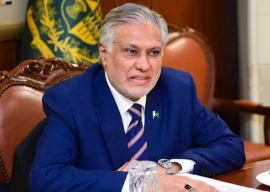
Under pressure from the International Monetary Fund (IMF) to reduce its fiscal deficit, particularly spending on subsidies, the government has been keen to take advantage of lower global oil prices to reduce the amount of subsidy it gives out to mostly upper middle class consumers for their monthly electricity bills. The two surcharges approved by the government at a meeting of the Economic Coordination Committee (ECC) of the Cabinet amount to Rs1.97 per kilowatt-hour on average, or about 17% of current prices.

Faced with rising financial pressures from the badly run state-owned energy sector, the government has tried to push the power regulator to raise the allowable losses from theft and inefficiency from 12.5% of the total power produced by the grid to 15.5%, which would still be below the 19% actual loss levels. After Nepra refused to comply with the government’s demands, the ECC made the decision to extract the additional revenues through the imposition of the surcharges.
The surcharges were calculated to keep current prices level, despite a reduction in power generation costs due to lower oil prices. The government took the opportunity of those lower prices to avoid a political backlash. People are less likely to react negatively to prices staying level than an increase in prices.
The surcharges include a Rs1.54 per unit ‘tariff rationalisation surcharge’ which would be used to pay state-owned power distribution companies for their line losses, while an additional Rs0.43 per unit ‘financing cost surcharge’ will be used to pay the amounts that the state-owned Central Power Purchasing Agency (CPPA) owes private-sector power generation companies.
Consumers who are classified as ‘lifeline consumers’ – people who use less than 100 kWh per month are exempted from these surcharges, and the bulk of them will be paid by upper middle class and wealthier households.
Published in The Express Tribune, May 27th, 2015.






1726054615-0/OpenAI-(2)1726054615-0-270x192.webp)











COMMENTS
Comments are moderated and generally will be posted if they are on-topic and not abusive.
For more information, please see our Comments FAQ